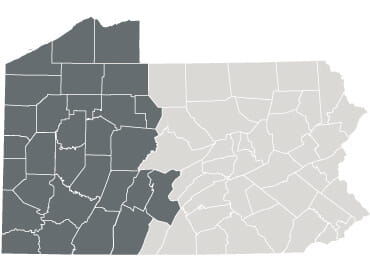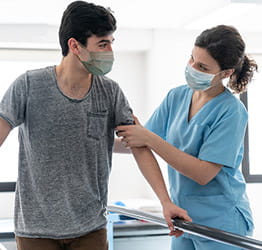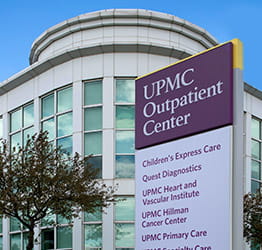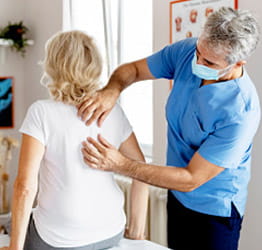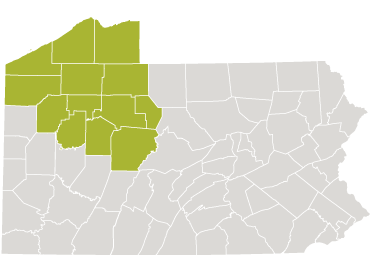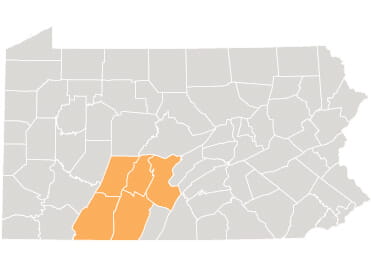Chagas disease, also known as American trypanosomiasis or kissing bug disease, is an illness caused by a parasite infection.
The parasite Trypanosoma cruzi causes Chagas disease. It typically spreads through the feces or urine of triatomine bugs, also known as kissing bugs.
There are two stages of Chagas disease: acute and chronic. During the chronic phase, people experience symptoms like fever, fatigue, body aches, and diarrhea. Many people don't have symptoms during the chronic phase, but some people develop heart or digestive issues.
Treatment typically focuses on killing the parasite or managing symptoms.
Chagas disease is mostly found in Mexico, Central America, and South America. However, the Centers for Disease Control and Prevention (CDC) also classifies it as endemic in the United States. According to the CDC, about 8 million people worldwide have Chagas disease, including about 280,000 in the United States.
Looking for Chagas Disease Care?
Related services include:
On this page
What Is Chagas Disease?

Chagas disease (kissing bug disease) is an illness caused by infection with the parasite Trypanosoma cruzi. It is an insect-borne disease, as it most commonly spreads through the feces or urine of triatomine bugs, also known as kissing bugs.
Kissing bug illness can cause a wide range of symptoms, both in the short and long term. In the short term, typical symptoms are similar to those of many other infections, such as fever and body aches. Long-term effects of kissing bug disease may include heart complications and digestive issues. These problems can be serious.
How common is Chagas disease?
Chagas disease affects about 8 million people worldwide, including 280,000 in the United States, according to the CDC. It is most common in Mexico, South America, and Central America.
The CDC classifies Chagas disease as an endemic in the United States. It is most common in the southern states, particularly Texas. However, 30 states have identified triatomine bugs — including Pennsylvania, Ohio, Maryland, West Virginia, and New Jersey.
What causes Chagas disease?
Infection with the parasite Trypanosoma cruzi causes Chagas disease. The parasite typically spreads through the feces or urine of infected triatomine bugs (kissing bugs).
When kissing bugs bite, they urinate or defecate close to the wound. The feces or urine can then end up in the bites or in other open areas of the body, such as the eyes or mouth. People may inadvertently rub them into their bites or other areas of the body.
Less commonly, Chagas disease may spread through:
- Blood transfusions with infected blood products.
- Childbirth (mother-to-child transmission).
- Consuming contaminated food and drinks.
- Laboratory accidents.
- Organ transplants from infected organ donors.
What are Chagas disease risk factors and complications?
Chagas disease risk factors
The risk factors for Chagas disease include:
- Having a family member who has Chagas disease.
- Hunting or camping.
- Living in rural areas.
- Traveling to areas where the T. cruzi parasite is most common.
- Working in agriculture or outdoors.
Complications of Chagas disease
Some people with Chagas disease develop complications years to decades after their initial infection, including:
- Abnormal heart rate or rhythm.
- Constipation.
- Enlarged heart.
- Heart failure.
- Sudden cardiac death.
- Trouble swallowing.
Kissing bug disease heart complications are more common than gastrointestinal issues. According to the World Health Organization, about one-third of people develop cardiac complications. About 10% develop gastrointestinal complications.
How can I prevent Chagas disease?
There are no vaccines or preventive medicines for Chagas disease. The best way to prevent Chagas disease is to lower your risk of exposure, especially when traveling to areas where it's most common. The CDC recommends the following steps for lowering your risk during such travel:
- Dressing in clothes that cover your skin.
- Not eating raw fruits and vegetables and not drinking unpasteurized fruit juices.
- Spraying bug spray on exposed skin.
- Staying in well-constructed buildings.
- Using bed nets that are treated with long-lasting insecticide when sleeping.
Back to top
What Are the Signs and Symptoms of Chagas Disease?
The early signs of Chagas disease include:
- Abdominal or chest pain.
- Body or muscle aches.
- Breathing problems.
- Diarrhea.
- Fatigue.
- Fever.
- Headache.
- Loss of appetite.
- Nausea or vomiting.
- Rash.
- Romaña's sign (purplish swelling around the eyelids).
The acute phase of Chagas disease lasts around two months.
It can be difficult to tell if you have kissing bug illness because many of the symptoms during the acute phase also occur with other infections. The most telltale way to know how a kissing bug bit you is Romaña's sign. However, not everyone will have this symptom.
Some people will experience long-term side effects from chronic Chagas disease, including:
- Cardiac issues — Abnormal heart rate or rhythm, enlarged heart, heart failure, or sudden cardiac death.
- Digestive issues — Enlarged esophagus or colon, leading to trouble swallowing or constipation.
When should I see a doctor about my Chagas disease symptoms?
You should contact a doctor if you've been to an area where Chagas disease is common and you're experiencing symptoms.
Back to top
How Do You Diagnose Chagas Disease?
Doctors test for Chagas disease with lab (blood) tests.
Your visit typically will begin with your doctor taking your health history. They will perform a physical exam and ask you about your symptoms and your potential exposure to the T. cruzi parasite through travel or other means. They will also order blood tests, which can identify the T. cruzi parasite.
Chagas disease prognosis
The acute phase of Chagas disease lasts around two months. Most people have mild symptoms or are asymptomatic.
People can develop more serious complications from chronic Chagas disease. Depending on the severity of their symptoms, they may need treatment from a cardiac or gastrointestinal specialist.
Back to top
How Do You Treat Chagas Disease?
The goals of treating Chagas disease are to kill the parasite, prevent its progression, or manage symptoms.
Medicine to treat Chagas disease
The United States Food and Drug Administration has approved two antiparasitic medicines to treat Chagas disease:
- Benznidazole — FDA-approved for children aged 2 to 12 years old.
- Nifurtimox (Lampit®) — FDA-approved for children from birth to 18 years old.
These antiparasitic medications can cure Chagas disease in the acute stage, especially if given early. Treatment typically lasts for 60 days.
For chronic Chagas disease, antiparasitics can help slow the diseases progression and potentially prevent complications.
Symptom management of Chagas disease
In addition to antiparasitic medications, Chagas disease treatment focuses on managing symptoms.
People who develop cardiac or gastrointestinal complications from chronic Chagas disease may need ongoing treatment from a specialist.
Is Chagas disease treatment right for me?
Antiparasitic medications can cure Chagas disease, especially if you begin treatment during the acute phase. They may slow the infection's progression if you take them during the chronic phase.
Treatment may be especially important for:
- Babies born with Chagas disease.
- Immunocompromised people.
- People with long-term Chagas disease.
Back to top
Why Choose UPMC for Chagas Disease Care?
The UPMC Center for Care of Infectious Diseases provides expert care for a wide range of bacterial, fungal, parasitic, and viral infections. At our center, you can expect:
- Disease expertise — We have specialty units for a wide range of different diseases, including those from global travel. Our specialists have years of experience in diagnosing and treating a wide range of infectious diseases.
- Research-backed care — Our center focuses on both research and clinical care. This allows us to provide the latest research-backed treatments and offer you the ability to participate in clinical trials.
Additional Resources
Back to top
By UPMC Editorial Staff. Last reviewed on 2025-11-24.

